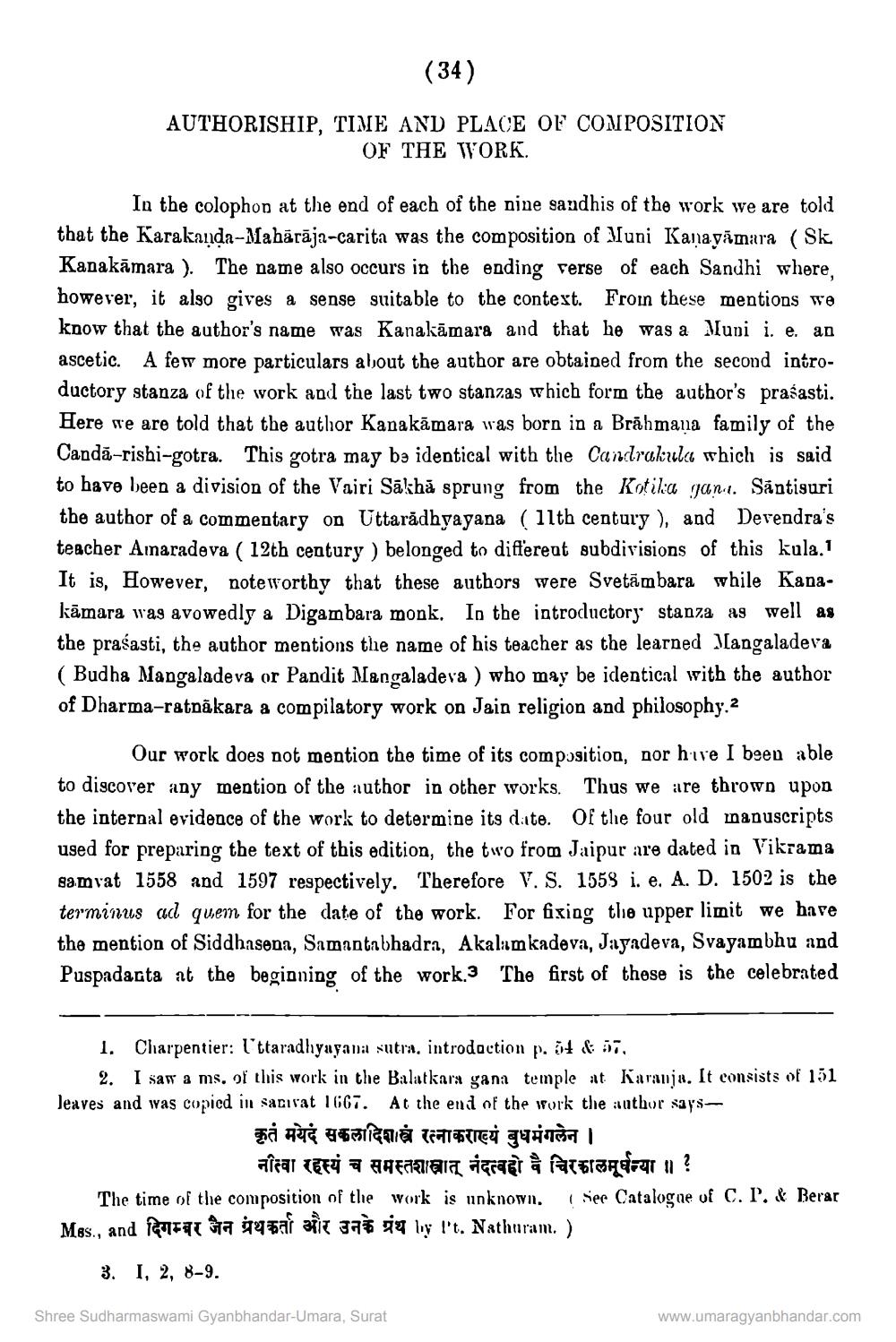________________
(34)
AUTHORISHIP, TIME AND PLACE OF COMPOSITION
OF THE WORK.
In the colophon at the end of each of the nine sandhis of the work we are told that the Karakanda-Mahārāja-carita was the composition of Muni Kanayāmara (Sk Kanakāmara ). The name also occurs in the ending verse of each Sandhi where, however, it also gives a sense suitable to the context. Froin these mentions we know that the author's name was Kanakāmara and that he was a Muni i. e. an ascetic. A few more particulars about the author are obtained from the second introductory stanza of the work and the last two stanzas which form the author's prašasti. Here are are told that the author Kanakāmara was born in a Brāhmana family of the Candă-rishi-gotra. This gotra may be identical with the Candrakula which is said to have been a division of the Vairi Sākhă sprung from the Kotika gan... Santisuri the author of a commentary on Uttarādhyayana ( 11th century ), and Devendra's teacher Amaradeva ( 12th century ) belonged to different subdivisions of this kula.1 It is, However, noteworthy that these authors were Svetām bara while Kanakāmara was avowedly a Digambara monk. In the introductory stanza as well as the prasasti, the author mentions the name of his teacher as the learned Jangaladeva ( Budha Mangaladeva or Pandit Mangaladeva ) who may be identical with the author of Dharma-ratnākara a compilatory work on Jain religion and philosophy:2
Our work does not mention the time of its composition, nor hue I been able to discover any mention of the author in other works. Thus we are thrown upon the internal evidence of the work to determine its dite. Of the four old manuscripts used for preparing the text of this edition, the two from Jaipur are dated in Vikrama samvat 1558 and 1597 respectively. Therefore V. S. 1559 i. e. A. D. 1502 is the terminus ad quem for the date of the work. For fixing the upper limit we have the mention of Siddhasena, Samantabhadra, Akalım kadeva, Jayadeva, Svayambhu and Puspadatta at the beginning of the work. The first of these is the celebrated
1. Charpentier: l'ttaradhyayana sutra, introdaction p. 04 57
2. I saw a ms, of this work in the Balatkars yana temple at Karanja. It consists of 151 leaves and was copied in saciat 1667. At the end of the work the author says
कृतं मयेदं सकलादिशास्त्रं रत्नाकराख्यं बुधमंगलेन ।
नीत्वा रहस्यं च समस्तशास्त्रात् नंदत्वहो वै चिरकालमूर्धन्या ॥ ? The time of the composition of the work is unknown. (See Catalogue of C.I.& Berar Mos., and fansat fa 19a ai gali ja ly lit. Nathuram. )
3.
1, 2, 8-9.
Shree Sudharmaswami Gyanbhandar-Umara, Surat
www.umaragyanbhandar.com




